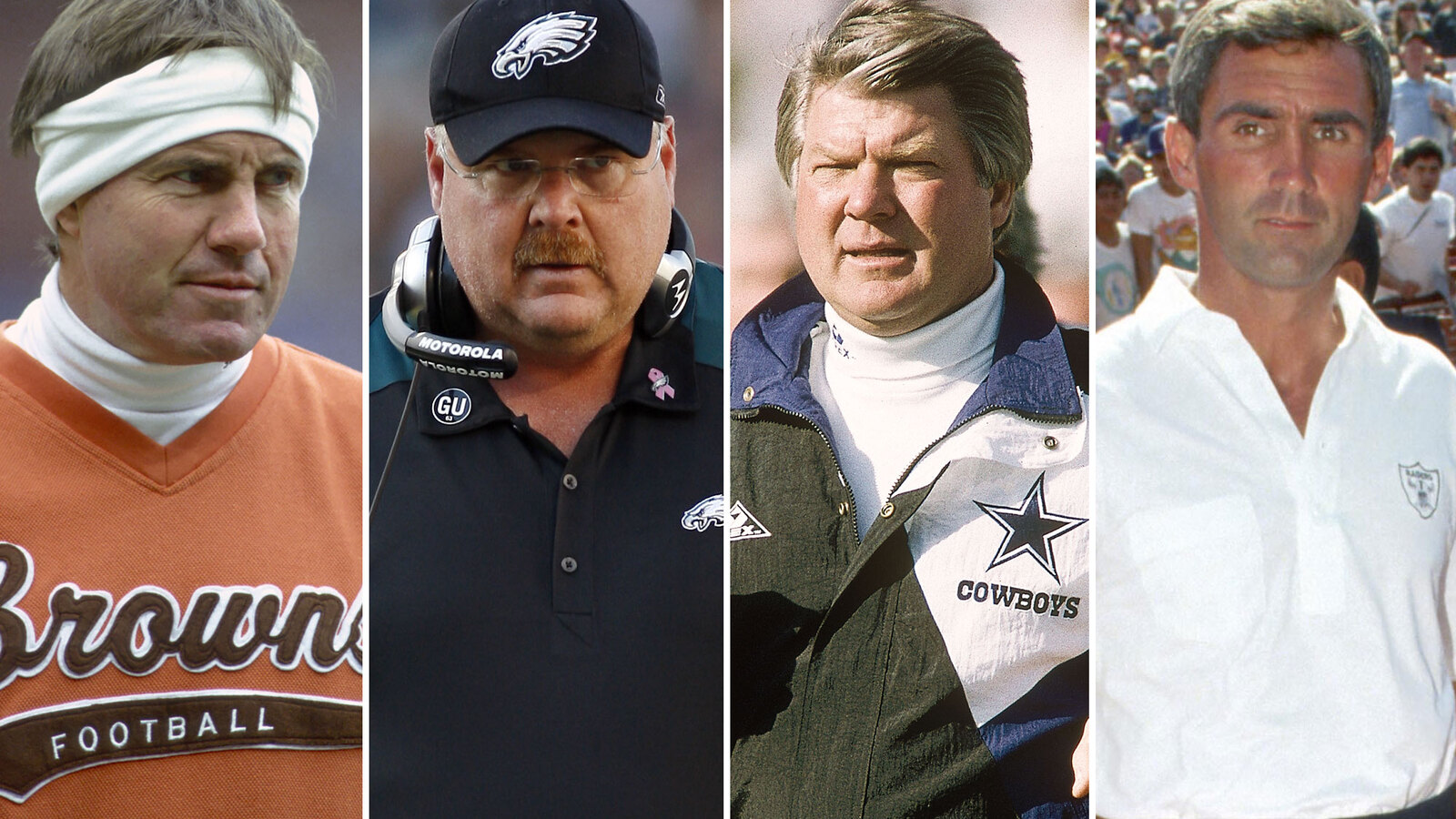Many teams have made missteps regarding a separation from a head coach or coordinator. Some have been straight firings, others de facto dismissals described as mutual separations. Here are some of the most notable coach or coordinator ousters in NFL history.
1 of 20
Pittsburgh Steelers: Dıck LeBeau, 2015
Brian Kunst/Zumapress/Icon Sportswire
The Steelers defensive coordinator during their Greg Lloyd-Kevin Greene “Blitzburgh” days in the mid-1990s, LeBeau returned after a failed stint as Bengals head coach. The Hall of Fame DB’s second act in Pittsburgh produced two Super Bowl trophies, with both the 2005 and ’08 Steeler champion teams geared around menacing defenses. Pittsburgh’s 2008 defense led the NFL in points, yards and DVOA. After a down 2014, the team’s first post-Troy Polamalu year, the Steelers and LeBeau mutually parted ways. The Steelers proceeded to become an offense-oriented team behind the “Killer B’s,” beginning a period of high sack numbers but consistent defensive unreliability.
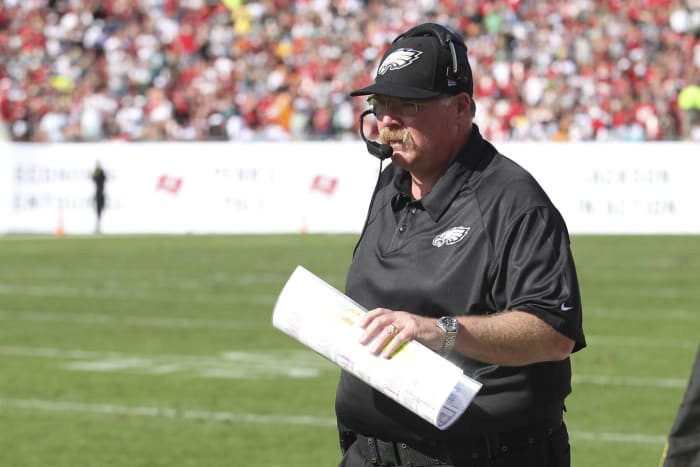
Mark LoMoglio/Icon Sportswire
Reid recently reminded the Eagles how valuable he has become in his second act, with he and prized pupil Patrick Mahomes beating a better (roster-wise) Philly squad in Super Bowl LVII. The Eagles’ steadiest Super Bowl-era period came under Reid, their HC from 1999-2012; Philly soared to five NFC championship games and a Super Bowl. But the 2011 “Dream Team” effort fizzled, leading to a 4-12 2012 season. The Eagles have enjoyed success post-Reid, winning Super Bowl LII. But Reid is now in the top five in all-time wins and has built a superpower in Kansas City. The Chiefs are 10-for-10 in winning seasons under the play-calling mastermind.
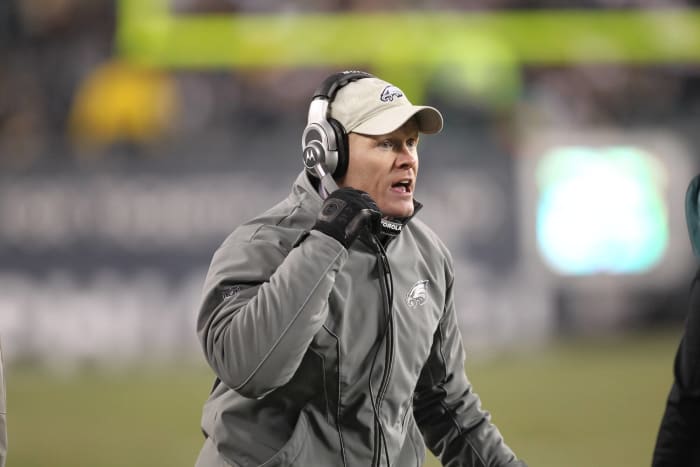
Hunter Martin/Philadelphia Eagles/Getty Images
Reid pulled the plug quickly on McDermott, firing him after two seasons. The current Bills head coach succeeded veteran Jim Johnson as Eagles defensive coordinator in 2009, after Johnson died of cancer. Although the Eagles made the playoffs in 2009 and ’10 and ranked 12th defensively each year, an injury-limited defense allowed a then-team-record 31 TD passes in the latter season. After his ouster, McDermott became Ron Rivera‘s right-hand man in Carolina, parlaying that into a role as the architect of perhaps this century’s best rebuild. McDermott is now entering Year 7 as the Bills head coach.
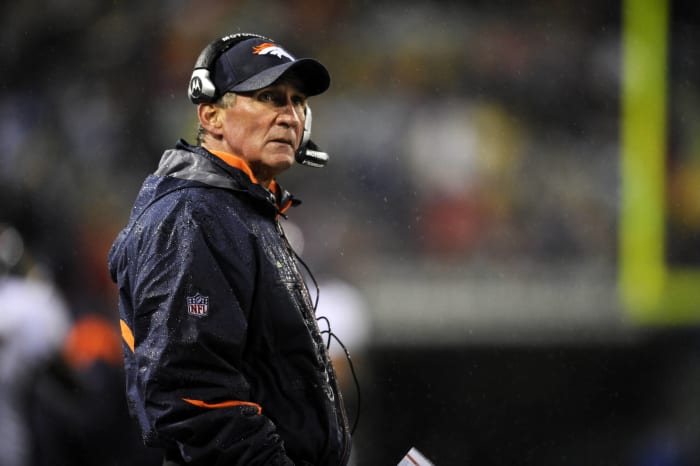
Rich Kane/Icon Sportswire
Shanahan’s best years obviously came with John Elway, but the Broncos made four playoff berths from 2000-05. Pat Bowlen called Shanahan his “coach for life,” but he canned the 14-year HC after a 2008 collapse. The Broncos became the first team to blow a three-game division lead with three to play. Bowlen’s replacement — Josh McDaniels — nearly burned the place down. McDaniels not only took over as HC, he assumed Shanahan’s coach/de facto GM role. The Jay Cutler trade and a videotaping scandal highlighted McDaniels’ ignominious tenure, which ended in December 2010. Peyton Manning saved the Broncos in 2012, but they have swung and missed a few times in the HC department post-Shanahan.
5 of 20
Chicago Bears: Ron Rivera, 2007
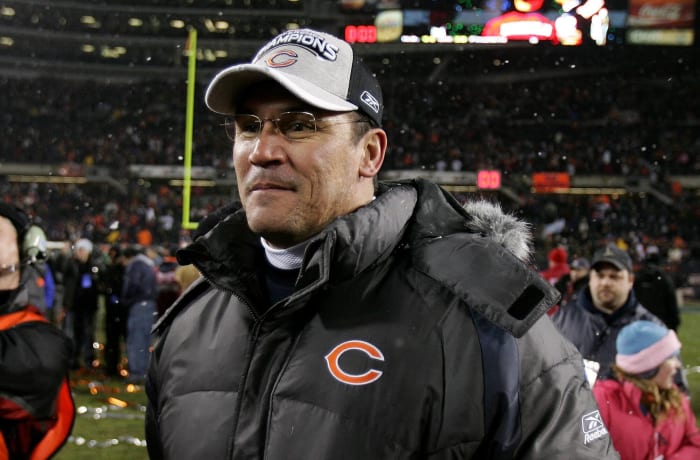
Jonathan Daniel/Getty Images
The former Bears linebacker rose to the role of Chicago’s DC by 2004. The 2005-06 seasons double as the franchise’s post-1980s defensive apex. The Bears still opted not to retain Rivera, then a popular HC candidate, in 2007. The Bears led the NFL in defense in 2005 and, in one of this century’s great defensive feats, booked a Super Bowl XLI trip with Rex Grossman at QB. After talks floundered, Rivera took a step down to become the Chargers’ linebackers coach. Chicago’s defense took a tumble in 2007 and ranked outside the top 10 through ’09. Rivera oversaw multiple elite Panthers defenses and guided them to four playoff berths and a Super Bowl.
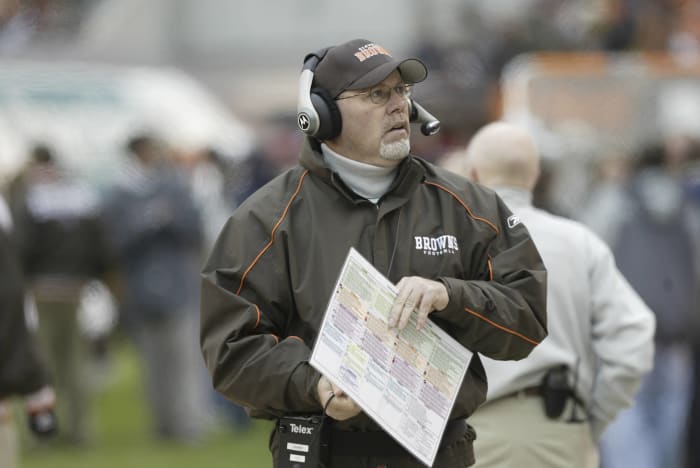
George Gojkovich/Getty Images
Arians had a few what-ifs in Cleveland. The first came when the Browns axed their offensive coordinator after the 2003 season. The future Super Bowl-winning HC spent three seasons as Browns OC; in Year 2 of that stay, Browns 2.0 booked its only playoff berth in its first 21 seasons. The Browns also put up 33 points in a wild playoff loss to the Steelers, who hired Arians soon after his Cleveland ouster. The Browns also chose Eric Mangini over Arians, the OC on the 2008 Steelers’ Super Bowl team, in 2009 and, amid rampant organizational turnover to start Jimmy Haslam’s ownership run, passed again in 2013. The 2012 Coach of the Year, Arians won the award again with the 2015 Cardinals.
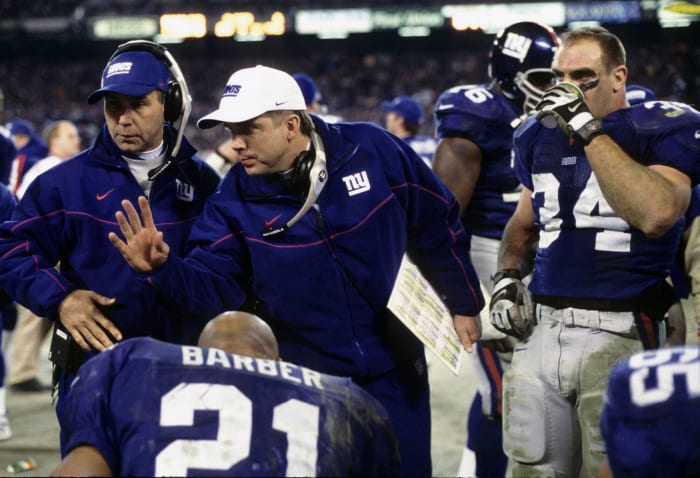
Al Pereira/Getty Images
This falls under the “de facto firing” umbrella. Payton provided a boost to Jim Fassel’s Giants tenure, taking over as Big Blue’s play-caller while still just QBs coach in 1999. The Giants promoted Payton to OC in 2000, when they stampeded to Super Bowl XXXV (after Fassel’s iconic “this team is going to the playoffs” speech). Midway through the ’02 season, Fassel stripped Payton of play-calling duties. While that ended up helping temporarily, the Giants were prepared to move on in 2003. Payton’s stay as Cowboys QBs coach led to one of this era’s better HC tenures. Since Payton’s Saints debut, the Giants have employed six head coaches.
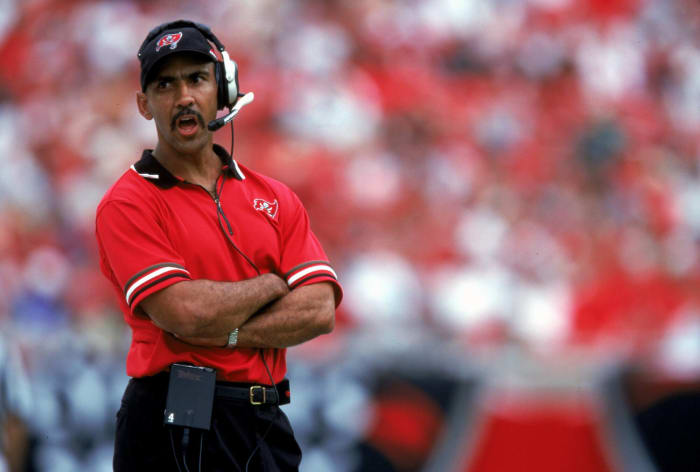
Andy Lyons/Allsport/Getty Images
Jon Gruden‘s work in the years following the Bucs’ Super Bowl XXXVII win (with Dungy’s troops) invites questions about his predecessor’s exit. The Bucs offense ranked 15th during Dungy’s final season (2001); it never ranked higher than 18th under Gruden, his play-calling reputation aside. Dungy resurrected one of the NFL’s worst franchises, leading it to four playoff berths and an NFC title game. Based on Dungy’s Colts success (feat. Peyton Manning, but still) and Gruden’s personnel failures from 2003 through his 2008 firing, it can be argued the Bucs would have been positioned better had they not ousted Dungy and traded two first-rounders and two seconds for Gruden.

Matt A. Brown/Icon Sportswire
Schottenheimer coached in Washington in 2001, an 8-8 season. The NFL world did not have a clear picture of Dan Snyder just yet. At the time, the young owner was viewed as a meddling leader who threw money around in free agency. Snyder wanted to strip Schottenheimer of personnel power, leading to the firing one year into the acclaimed coach’s four-year contract. Snyder then gave Florida’s Steve Spurrier a five-year, $25 million deal that made the Fun ‘n’ Gun architect the NFL’s highest-paid HC. Spurrier became one of many Snyder mistakes. Schottenheimer rebounded with the Chargers, reaching 200 wins (eighth all-time). Washington plunged into a two-decade nightmare.
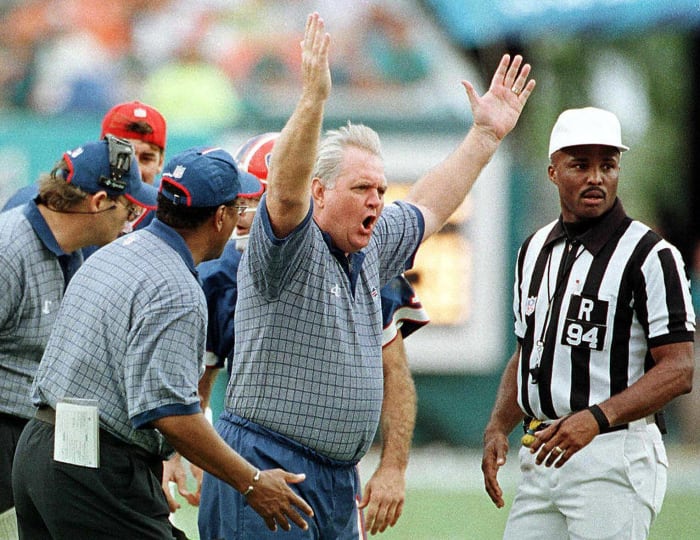
RHONA WISE/AFP via Getty Images
Although trying his hand as a coach in XFL 3.0, Phillips has labeled himself a “lousy” NFL head coach. That is a bit harsh, seeing as he went 82-64. Phillips went 2-for-3 in playoff berths as Buffalo’s HC, a tenure overshadowed by the Doug Flutie-Rob Johnson QB controversy. As that continued through the 2000 season, owner Ralph Wilson fired Phillips for refusing to fire special teams coordinator Ronnie Jones. Phillips hired Jones after the Music City Miracle debacle. After Phillips’ exit, the Bills went 16 more seasons without a playoff berth. Phillips led Dallas to two in four seasons and earned a ring upon leading a dominant Broncos defense in 2015.
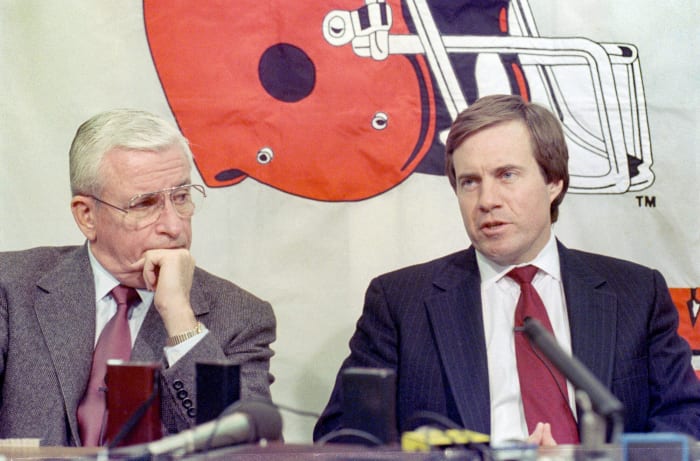
Mark LoMoglio/Icon Sportswire
The Browns employed Belichick for five seasons; the Ravens fired him. Art Modell initially said he would take Belichick, who had the Browns in the 1994 divisional round before Modell’s relocation announcement sent the ’95 team into a tailspin, to Baltimore. The owner changed his mind, hiring Ted Marchibroda. Belichick took plenty of heat during his Browns tenure, which ended with a 5-11 season. But he soon helped Bill Parcells with the Patriots and Jets, and by the time the grouchy genius’ second-chance HC gig began in 2000, he was a finished product. Although the Ravens have two championships, the Belichick infrastructure made the Pats this century’s defining team.
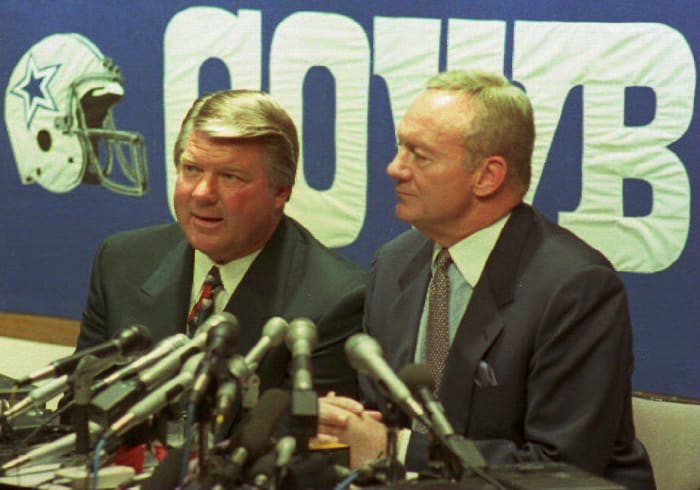
PAUL BUCK/AFP via Getty Images
Johnson had bristled about his say-so regarding football matters a year prior to this separation — described as mutual, but this break up cannot be omitted here — and a dynasty entered an immediate decline in March 1994. Johnson and Jerry Jones bristled about who ran the show, with Jones being the GM and Johnson having the football-side final say. After a perceived snub at a league party, Jones told reporters he could get 500 coaches to win with this team. This gradual divorce shocked the football world, as it came after the Cowboys convincingly repeated as Super Bowl champs. Barry Switzer oversaw Dallas’ Super Bowl XXX win, largely with Johnson’s roster, and the team has never been the same since.
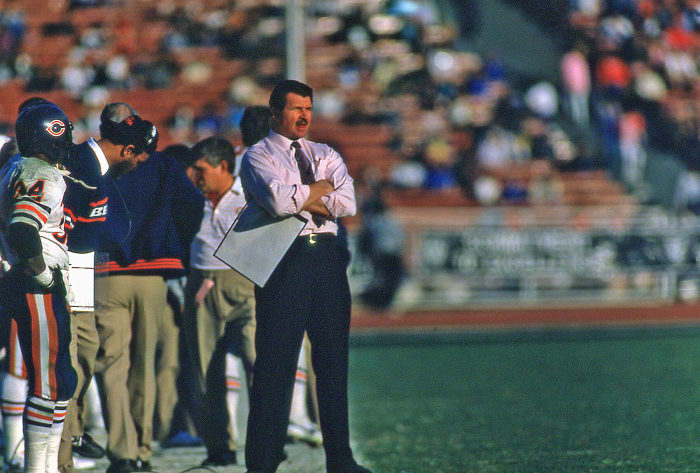
Owen C. Shaw/Icon Sportswire
Ditka’s Saints tenure could point to his time having passed, but the Bears plummeted in prestige quickly after firing their top modern coach. The Bears finished 5-11 in 1992 but had won back-to-back NFC Central titles in 1990 and ’91, going 11-5 each season. The Bears were clinging to their 1980s glory by that point, as their roster needed overhauling. Still, Ditka took them to seven playoff berths in his final nine seasons. The fiery coach said, “The Bears will come back,” at his farewell press conference. For the most part, they have not. They have made the playoffs in back-to-back years just once (2005-06) and slipped behind the Packers and Vikings in their division.
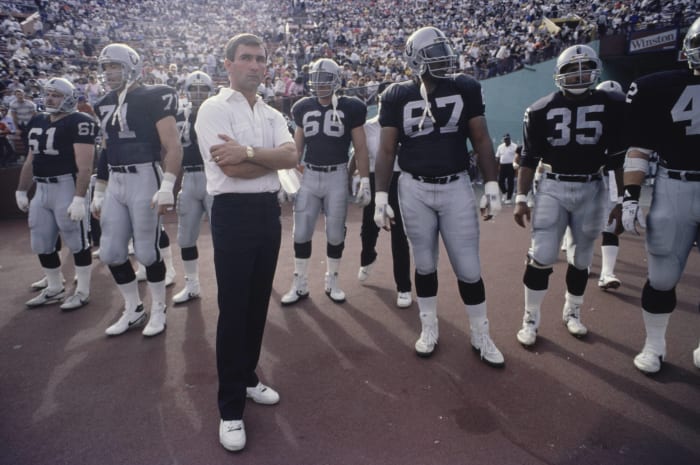
Mike Powell/Allsport/Getty Images
Al Davis lured a 35-year-old Shanahan to L.A. from his post as the Broncos offensive coordinator but fired him 20 games into his tenure. Friction between Davis and Shanahan led to the quick bailout. Davis undermined Shanahan’s decisions and disagreed on the direction of the offense, and a stubborn young coach did not exactly fall in line with the Raider M.O. The Raiders enjoyed immediate success under replacement Art Shell, but it proved fleeting. Shanahan returned to Denver as an assistant before, as 49ers OC, guiding Steve Young to his career peak. The Broncos rehired Shanahan in 1995, winning two Super Bowls, and kept him around for 14 seasons.
15 of 20
Cleveland Browns: Marty Schottenheimer, 1989

George Gojkovich/Getty Images
AFC favorites in 1988, the Browns went 10-6 and lost to the division-rival Oilers in the wild-card game. But the team lost Bernie Kosar to separate injuries and used four starting QBs. Art Modell forced Schottenheimer out because he would not accept directives about staff changes. Schottenheimer not hiring an offensive coordinator to replace Lindy Infante, whom the Packers hired as HC in 1988, was the primary sticking point. Schottenheimer, who led the Browns to four straight playoff appearances, revived the moribund Chiefs immediately and coached 17 more seasons. The Browns have made three playoff appearances since this separation.
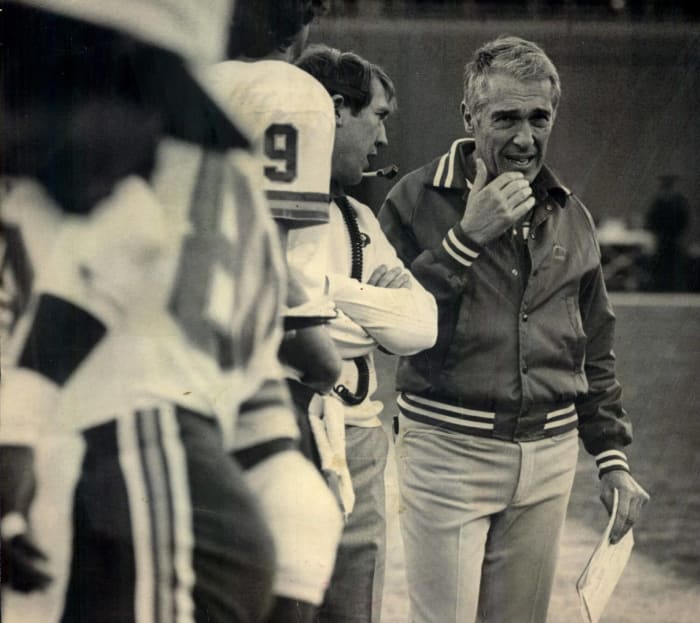
Denver Post via Getty Images
Levy lifted the sinking Chiefs to respectability in the early 1980s; they went 24-24 from 1979-81. Chiefs president Jack Steadman viewed the team as plateauing and fired Levy after he went 3-6 during the nine-game 1982 strike season. Both Steadman and Lamar Hunt viewed Levy as a low-ceiling coach, one who lifted the Chiefs to the middle class, but he offered more in his second act. After a USFL stint, Levy overhauled the Bills, and produced an unprecedented Super Bowl four-peat that involved two playoff wins over his former employer. The Chiefs (one playoff berth from 1971-90) struggled to find footing in the 1980s and ran into January walls in the ’90s.
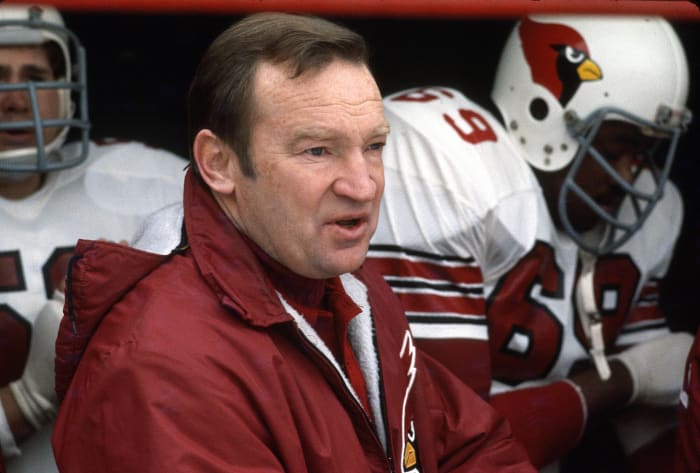
Focus on Sport/Getty Images
Bill Bidwill’s sacking of Coryell after the 1977 season — a collapse that heated up the owner-HC feud to a boiling point — returned the Cardinals to mediocrity. The future Air Coryell San Diego architect vaulted St. Louis past Dallas — in Roger Staubach’s prime — to win back-to-back NFC East titles in 1974 and ’75. Jim Hart’s best seasons came under Coryell, who gave Cards fans a taste of what was to come with the Chargers. Coryell had tired of Bidwill’s thriftiness and his own lack of personnel input, but he led the Cards to three straight 10-plus-win seasons in the mid-’70s. The team did not make another non-strike-year playoff berth until 1998.
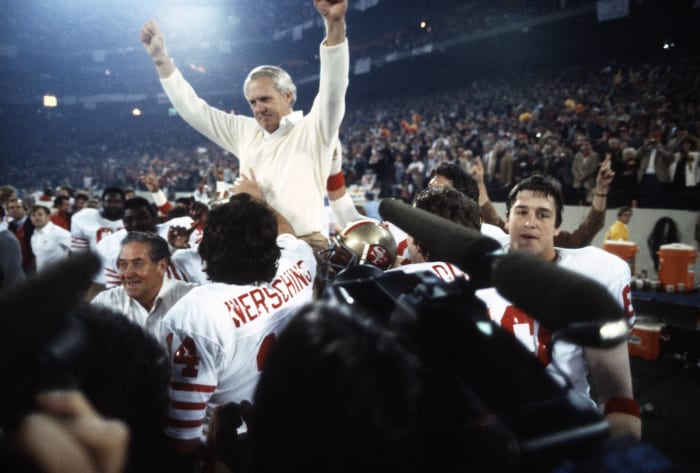
Getty Images
This separation became a cornerstone coaching transaction. Paul Brown observed Walsh, his QBs coach, rise into a head coach-caliber staffer as the Bengals unveiled the West Coast Offense prototype. Despite losing super-prospect Greg Cook to a career-ending injury, the Bengals ranked as a top-10 offense from 1970-75. When Brown stepped away from coaching, he picked O-line coach Bill Johnson as his successor — a move that surprised some players. Walsh said Brown later blocked him from landing HC jobs, but the 49ers’ 1979 hire changed their path. The Bengals did not make the playoffs during Johnson’s late-’70s tenure, and two of Walsh’s three Super Bowl titles came at the expense of his former employer.
19 of 20
Cleveland Browns: Paul Brown, 1963
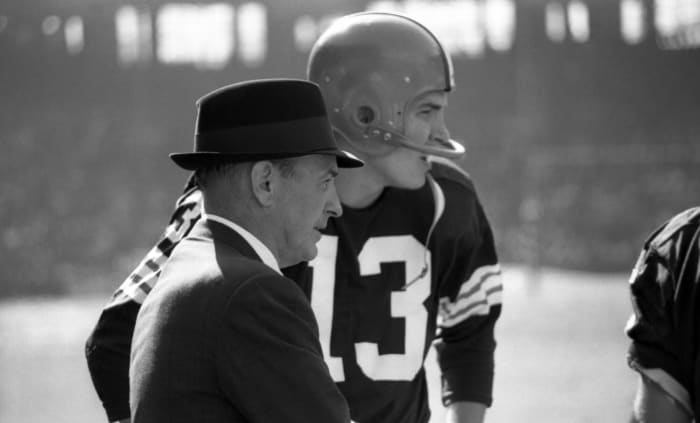
Kidwiler Collection/Diamond Images
The godfather of modern football, Brown cofounded the Browns in 1946. Their innovations — playbooks and game film among them — and Brown’s offense made them arguably the top expansion team in American sports history. After going 4-for-4 in All-American Football Conference titles, the Browns made six straight NFL championship games and won three. Art Modell, who bought the team in 1961, fired Brown three weeks after the 1962 season ended. Citing player morale and underachievement, Modell painted himself as an early villain — decades before he sealed that fate. The Browns did win the 1964 NFL title, but their mystique faded quickly. They remain in search of their second post-Brown crown.
20 of 20
Boston Patriots: Lou Saban, 1961
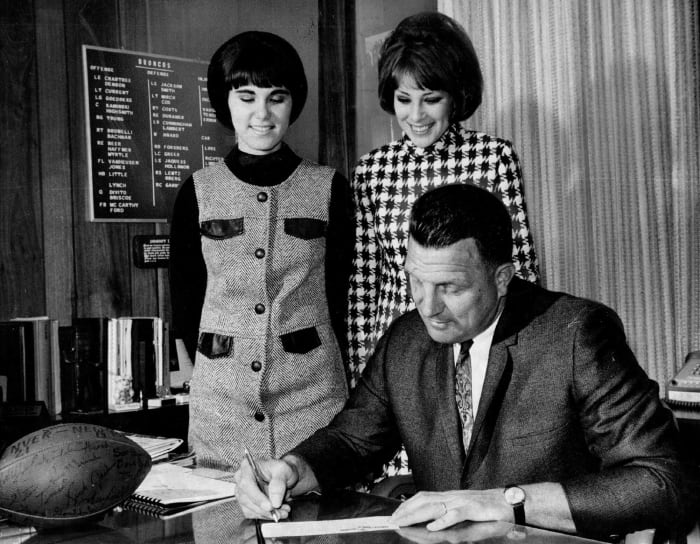
Denver Post via Getty Images
The Patriots’ first head coach, Saban received his walking papers five games into his second year. The Patriots viewed the Saban patriarch as running a dysfunctional operation, but they bailed rather early. The Pats were 2-3 in 1961, and although Boston went 5-9 in 1960, Saban edged out his former employer for AFL success. The Bills hired him as head coach in 1962; he steered the team to back-to-back AFL titles from 1964-65. The Pats did alright for themselves. Saban staffer Mike Holovak guided them to the AFL championship game in 1963 — a 51-10 loss to the Chargers — and trails only Bill Belichick for wins in team history. But Saban had the last laugh here.
Sam Robinson is a Kansas City, Mo.-based writer who mostly writes about the NFL. He has covered sports for nearly 10 years. Boxing, the Royals and Pandora stations featuring female rock protagonists are some of his go-tos. Occasionally interesting tweets @SRobinson25.
